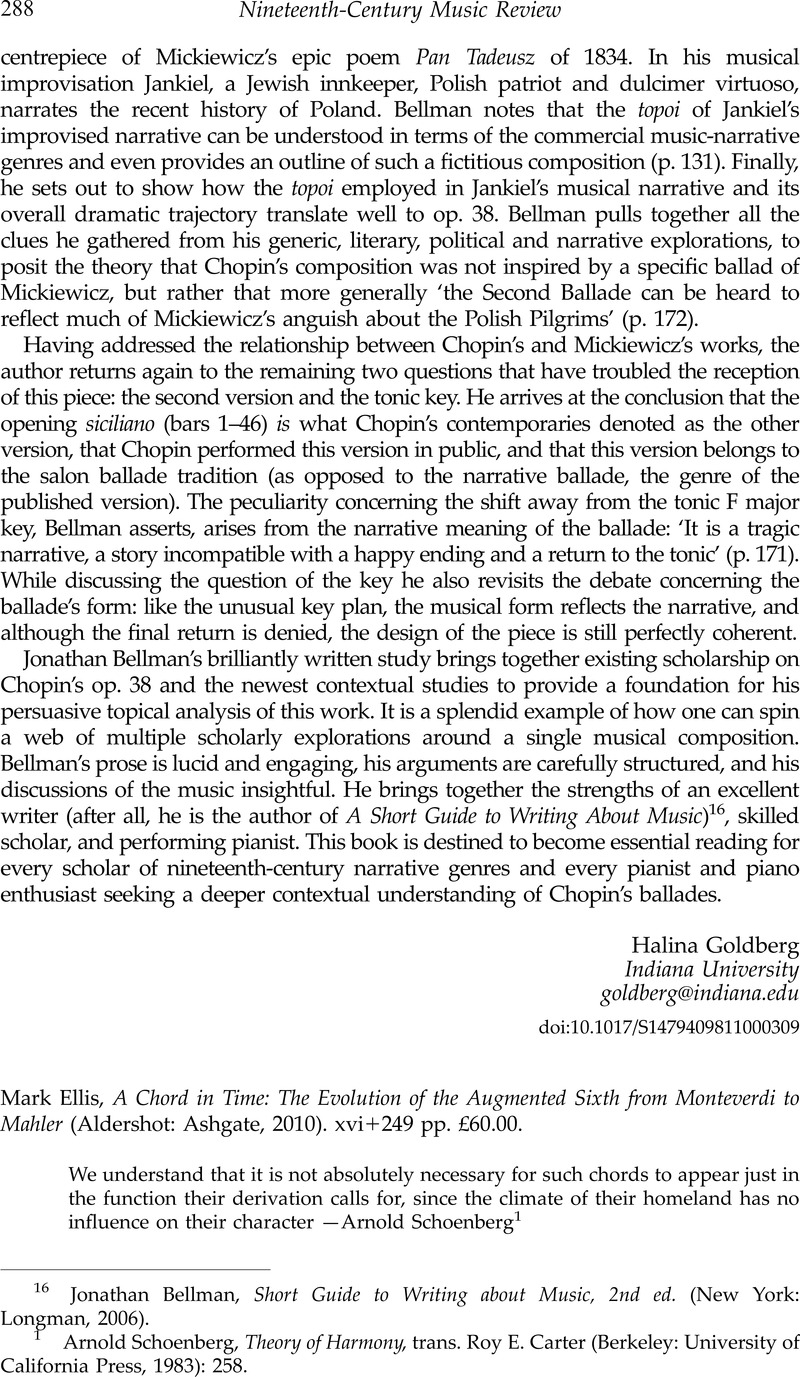No CrossRef data available.
Published online by Cambridge University Press: 24 November 2011

1 Schoenberg, Arnold, Theory of Harmony, trans. Roy E. Carter (Berkeley: University of California Press, 1983): 258Google Scholar.
2 The content organization in the early chapters is reminiscent of the ‘Other Augmented and Vagrant Chords’ section in Schoenberg, Theory of Harmony, 238–67.
3 While Ellis addresses matters of style along with chronology, readers may be surprised to learn that the two are not always in tandem.
4 See also Table 2.1, example (e).
5 Rosen, Charles, The Classical Style: Haydn, Mozart, Beethoven, expanded ed. (New York: W.W. Norton, 1997)Google Scholar.
6 See, for instance, the argument made in Smith, Charles J., ‘The Love of Fundamentals is the Root of All Evil: Alternatives to Harmonic Fundamentalism’, in A Composition as a Problem V: proceedings of the Fifth International Conference on Music Theory, ed. Mart Khumal (Tallinn: Eesti Muusikaakadeemia, 2008): 5–24Google Scholar. Smith maintains that, while fundamentals and roots have a rich history and a strong pedagogical role, they also impede our ability to discuss more chromatic sonorities.
7 The reception of Schoenberg's string sextet, Verklärte Nacht (1899), suffered because of the unusual chord in bar 42. See Lewin, David, ‘On the “Ninth-Chord in Fourth Inversion” from Verklärte Nacht’, Journal of the Arnold Schoenberg Institute 10/1 (June 1987): 45–64Google Scholar; and Haimo, Ethan, Schoenberg's Transformation of Musical Language (Cambridge: Cambridge University Press, 2007): 26–30Google Scholar.
8 No score is provided. While it is, of course, impossible to include examples of all passages under consideration, reading about music to which one does not always have access is frustrating. Dr Ellis's publishers have been generous, and the author himself acknowledges the importance of including lesser-known passages in his Preface. That said, Ashgate's commitment to environmentally responsible practices and its endorsement of the Forest Stewardship Council is both impressive and appreciated.
9 There is an augmented sixth in bar 16, between F♭ and D♮, leading to the cadence in A♭, although the passage then moves back to F minor several bars later. Several other examples lack identifying features such as the movement from which they are gleaned, or the measure numbers shown.
10 Stein, Deborah, ‘The Expansion of the Subdominant in the Late Nineteenth Century’, Journal of Music Theory 27 (Autumn ): 153–180CrossRefGoogle Scholar.
11 Harrison, Daniel, ‘Supplement to the Theory of Augmented-Sixth Chords’, Music Theory Spectrum 17 (1995): 170–195CrossRefGoogle Scholar.